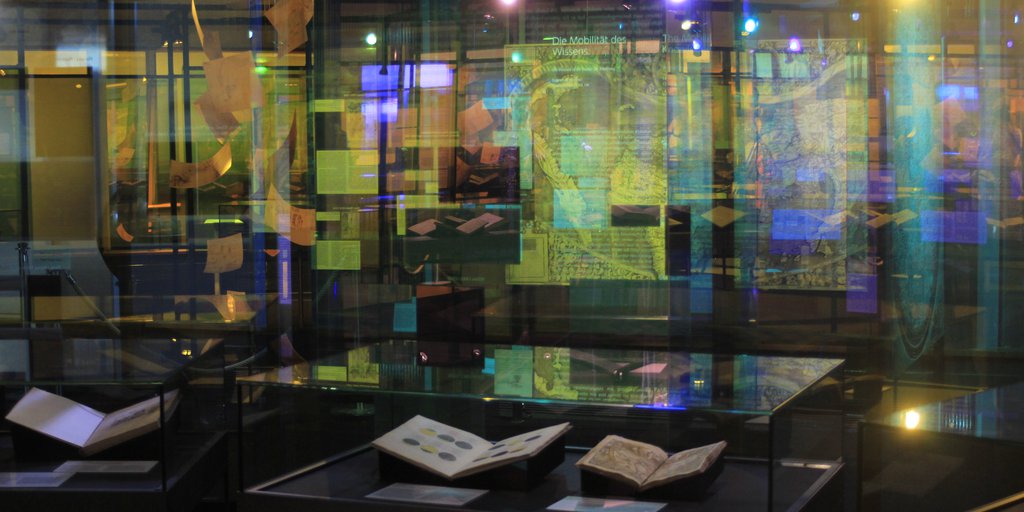
The Mobility of Knowledge <
Wisdom is the daughter of experience
Leonardo da Vinci
Codex Forster III, fol. 14r
The knowledge gathered by Leonardo in his personal library is collective knowledge. It is based, first, on a long tradition dating back to antiquity, and second, on increasing human mobility since the late Middle Ages. Oceanic navigation and the growth of printing created another major push. Merchants traveled along the major trade routes and maintained branches in important urban centers; participants in the Crusades brought knowledge to Europe, especially from the Arab world; international scholars and students exchanged ideas at the universities thanks to the universal language of Latin; artists and master builders traveled across Europe and beyond in search of lucrative commissions and the latest artistic developments. Explorers on voyages of discovery undertook daring expeditions to hitherto unknown continents and brought back new knowledge, while the colonizers who followed them seized the newly discovered territories—with terrible consequences for their inhabitants. This new knowledge was recorded and published in the form of reports, stories, in increasingly precise geographical maps, and in new scientific treatises. The result was a constant expansion and transformation of the worldview. In Leonardo’s library, too, the share of this new knowledge continued to grow over the years.
Leonardo's Berlin Library: Section 10 <
 | 99.
Kalendarium Venice: Erhard Ratdolt, Bernhard Maler, and Peter Löslein, 1476 |

The Calendar compiled by Regiomontanus (1436–1476), who came from Königsberg in Bavaria (hence the Latin form of his name), is far more precise than its precursors. Leonardo probably owned an Italian version of it (4 ▲ ). Aside from a monthly calendar in the typical almanac form, with astronomical data and overviews with forecasts of solar and lunar eclipses for the years 1475–1530, the calendar contains tables showing the expected degree of darkness and a conversion table with Nuremberg as the central reference point of the astronomical data for other European cities. Finally, the author presents an improved method for calculating the date of Easter—one reason for Regiomontanus’ appointment to Rome to work on the calendar reform planned by Pope Sixtus IV. Another work by Regiomontanus, the Ephemeriden (Ephemerides – calculated predictions for celestial bodies), was the precondition for the exploration of the world (109 ▲). Columbus, for example, used this as a navigational aid on his voyage of discovery.
References
Bambach, Carmen C. 2019. Leonardo da Vinci Rediscovered. Vol. 4: Scholarly Apparatus to Volumes One, Two, and Three. 4 vols. New Haven / London: Yale University Press, 18.
Mett, Rudolf. 1996. Regiomontanus. Wegbereiter des neuen Weltbildes. Einblicke in die Wissenschaft. Wissenschaftsgeschichte. Stuttgart / Zurich: B.G. Teubner / Vdf Hochschulverlag an der ETH.









